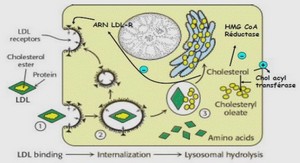Le Nitrogen-Containing Dimeric nor-Multiflorane Triterpene from a Turraea sp
Vincent E. Rasamison,†,⊥ L. Harinantenaina Rakotondraibe,‡,⊥,∥ Carla Slebodnick,‡ Peggy J. Brodie,‡ Michel Ratsimbason,† Karen TenDyke,§ Yongchun Shen,§ Lucien M. Randrianjanaka,∇ and David G. I. Kingston*,‡ † Centre National d’Application des Recherches Pharmaceutiques B.P, 702, Antananarivo 101, Madagascar ‡ Department of Chemistry and the Virginia Tech Center for Drug Discovery, Virginia Polytechnic Institute and State University, M/C 0212, Blacksburg, Virginia 24061, United States § Next Generation Systems, Eisai Inc., 4 Corporate Drive, Andover, Massachusetts 01810, United States ∇Conservation International, Villa Hajanirina, Lot II W 27 B, Ankorahotra, Antananarivo 101, Madagascar *S Supporting Information ABSTRACT: The new triterpene turranoic acid (1) and the new N-containing nor-triterpene turraenine (2), along with triptocallic acid B (3) and esculentoic acid (4) were isolated from leaves of a Turraea sp. Compounds 1−3 showed weak to moderate in vitro antiplasmodial activity against the chloroquine-resistant Plasmodium falciparum strain FCM29. Compound 1 also displayed weak cytotoxic activity against the nonsmall lung cancer cell line H522-T1 with an IC50 value of 16.4 μM. Plants from the genus Turraea (family Meliaceae, order Rutales) have been extensively investigated due to their high content of bioactive limonoids1−7 and triterpenoids such as turrapubesols8−10 and pregnanes.8,9,11,12 These compounds have been reported to have a wide range of biological activities including cytotoxic, insect antifeedant, and mosquito larvicidal activity. As part of a joint International Cooperative Biodiversity Group (ICBG) research program to search for new antimalarial and anticancer secondary metabolites from the natural resources of Madagascar, we selected a plant species from the genus Turraea for investigation. The genus Turraea contains approximately 85 species, about 60 of them found in tropical and southern Africa, one species in Australia, and 24 species in Madagascar.13 In African ethnobotany, species of this genus have been used as an aphrodisiac and to treat wounds, parasites (bilharzias), abscesses, and impotence, and the ripe fruit and the bitter bark of Turraea species are used in Madagascar to treat throat problems. A crude EtOH extract made from leaves of a Madagascar species of Turraea was selected for investigation since it demonstrated in vitro antiplasmodial activity at 3.9 μg/mL against the chloroquine-resistant strain FCM29 of Plasmodium falciparum during our preliminary screening. Bioassay-guided fractionation of this extract resulted in the isolation of turranoic acid (1), a new triterpenoid with a multiflorane skeleton, and turraenine (2), a new nitrogen-containing nor-multiflorane-type triterpene. Triptocallic acid B (3) and esculentoic acid (4) were also isolated (Figure 1). In this paper, we report the isolation and the structural elucidation of the new compounds 1 and 2 and the biological activity of all four compounds. The EtOH extract was subjected to liquid−liquid partitioning followed by column chromatography over silica gel, RP-C18.
A new labdane diterpene from Vitex cauliflora Moldenke from the Madagascar rainforest☆
Introduction The genus Vitex (Verbenaceae) consists of hermaphrodite shrubs to medium trees, and comprises about 250 recognized species distributed in tropical to temperate areas. Forty two Vitex species are found only in Madagascar [1]. A literature survey showed that Vitex species are a source of sesquiterpenes, iridoids, flavonoids, lignans, steroids and diterpenes, some of which have shown antimalarial, antioxidant, cytotoxic, antibacterial and tyrosinase inhibitory effects [2–8]. V. cauliflora Moldenke is an endemic shrub encountered in the Madagascar rainforest from 0 to 1600 m altitude. No information is available on its traditional uses, but its poisonous property has been reported [9]. There are no previous reports on biological or chemical studies of this species. During an ongoing screening for antiplasmodial activity of plants from Madagascar, the ethanolic extract of V. cauliflora showed antiplasmodial activity against the African multidrugresistant strain FCM 29 of P. falciparum with an IC50 value of 30.7 μg mL−1 . Investigation of this extract led to the isolation of a new but inactive labdane-type diterpene 1 along with the known triterpene uvaol. In this paper, we describe the isolation and structure elucidation of the new compound 1; studies to isolate the active antimalarial constituent to the extract have not yet been completed.



